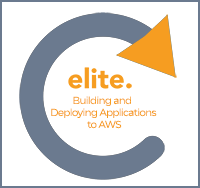Building and Deploying Applications to AWS
Code: ETAWS
Duration: 3 Days
Delivery methods:
Price per delegate: $995.00


This course focuses on taking real applications from on-premises, and then leveraging AWS technology in the code itself and also then leveraging AWS technology to automate the deployment process, whilst taking into account security, AWS platform features, and tools to facilitate the automation of build and deployment of your infrastructure. The course looks at how you can use S3, EC2, Docker and ECS, RDS, Dynamo DB, but in the context of some real-world problems. The course also can help prepare you for the AWS System Operations, Architecting, and Developing Associate Exams.
This session takes the form of some lectures along with demonstrations and exercises to consolidate the content being taught. It also involves a substantial workshop component where students deploy an application to the cloud.
Developers, DevOps engineers, cloud architects, and anyone who needs to know how to actually get applications successfully running in the cloud.
Chapter 1: What is the Cloud
Chapter 2: Introduction to Servers and EC2
Chapter 3: Introduction to Storage
Chapter 4: Security and the Cloud
Chapter 5: The Paradigm Shift for Traditional Infrastructure
Chapter 6: Developing applications for the cloud
Chapter 7: Leveraging Messaging
Chapter 8: Microservice Implementation
Chapter 9: Automation of Deployment
Chapter 10: Real World Deployment Example